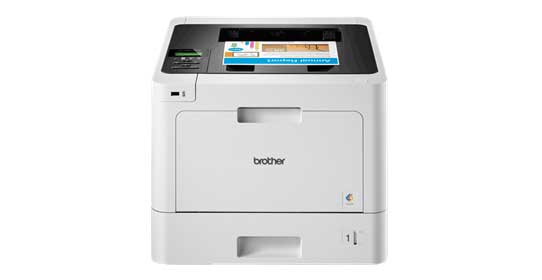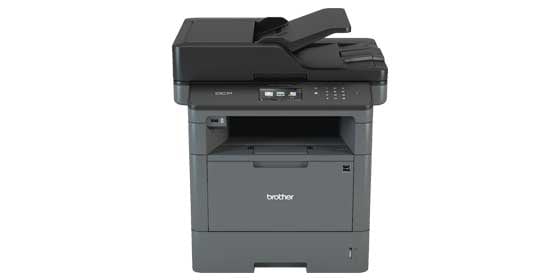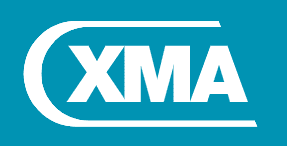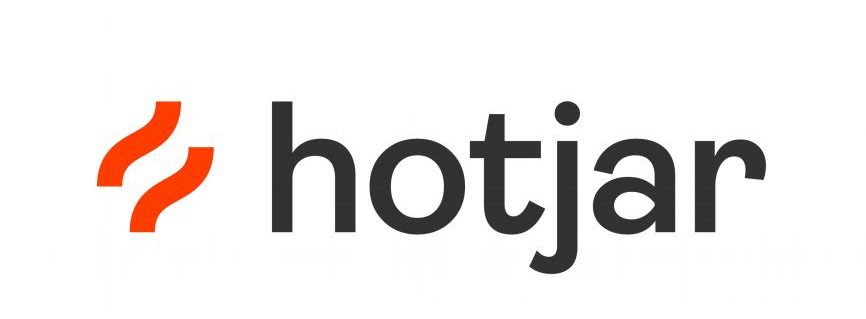How to avoid printer conversations
Avoid awkward privacy and security vulnerability questions with a secure print set-up.
Network-connected printers can be a route into your company for cyber criminals. For example, if default passwords are still in use or your Wi-Fi network is unsecure, your printing is vulnerable. By failing to tackle these potential weak spots, your business is in danger of GDPR’s heavy-weight penalties.
Just 22% of all businesses surveyed were completely assured their print infrastructure was secure.1
Companies operating a standardised printer fleet are 26% less likely to suffer data loss.1
Make sure printer security doesn’t put your business in peril—download the report by entering your details below
1 Quocirca Managed Print Services Landscape, 2017. European survey results of 180 midmarket (500-999 employees) and large (1000+ employees) organisations in UK, France and Germany using a managed print service.
Does your technology make the grade? 4 reasons why technology is critical to learning
With GCSE results out today and expected to have been the toughest yet with the new grading system, it got us thinking. How essential is technology to the way our students learn?
When I think back to my school days, which actually weren’t too long ago (no, really!), the overhead projector was the latest mod-con to hit the assembly hall and the chalkboard was still the smartest way to share real-time lesson content.
Well, technology has come a long way since those days, yet we still managed back then. Students were still learning, achieving and prospering from their education. So if we were able to nurture success before the technology boom, why is it so important in today’s classroom?
Here are 4 reasons why we believe technology now plays a critical role in learning:
1. Students demand it
Teens spend nearly 9 hours every day consuming media and have grown up immersed in technology, so keeping up with this demand is essential. The innovative adoption of technology can also play a key role in the recruitment of the next student body but IT departments should ensure that core infrastructures and applications have the flexibility to support these changes.
2. Learn at their own pace
Traditional learning could often be fast paced, risking a drop off of concentration and understanding. With the integration of technology in the classroom and learning concepts such as flipped learning, students can learn at their own speed, pause, and recap whenever they need, meaning that the more advanced student can go ahead, freeing up the teacher to provide support 1:1 to those who need it.
3. Enhance Engagement
Feedback from our customers over the years suggests that students learn best being more interactive. This is particularly apparent in STEAM subjects where content is often more complex. Technologies such as 3D print and robotics are leading the way in STEAM by breaking down the learning barriers and offering more practical methods of learning, whilst future-proofing students as they enter the workplace.
4. Enable Collaboration
Technology permits a connected world and in this case, a connected learning environment. With intelligent applications such as Office 365 and G Suite, students and teachers can communicate, collaborate, chat and use the familiar productivity applications in a secure environment.
As experts in education technology, we are close to the market and its trends. Here are a few technologies that are already making a real impact in the classroom:
Chromebooks
Chromebooks are taking over the classroom and the reasons are simple. They are cost effective and affordable, feature an all-day battery life and instant on functionality; and with Chromecast, students and teachers can instantly share their screen.
If you are interested in Chromebook, you should check out our latest offer! You can get a HP Chromebook for as little as £65.00!
3D print
For reasons we’ve previously discussed, 3D printing can play a valuable part in STEAM subjects, transforming the classroom into an interactive learning environment.
iPad
iPad is the ideal computing companion both inside and outside of the classroom. Its portable format, instant load up time and touch screen makes life easy for teachers and students alike. Perfect for internet research, making videos and music, taking lesson notes and sharing and managing content. What’s more, iPad is now much more cost effective and has full integration with cloud platforms such as Google and Microsoft.
So it’s clear, we have come a long way since school days were guided by a text book and piece of chalk. The dawn of the internet revolutionised the way we gained information and technology evolved around us – so much so, that teens today are technology native and would probably rather swap their right kidney than sacrifice their mobile phone.
That said, technology has enabled personalised, engaging and even mobile learning. Its enhanced collaboration and takes traditional subjects such as science, engineering and technology to the next level. Without it, the classroom struggles to thrive which is why building a technology environment that supports these trends is essential.
Is your tech up to the task?
Not sure how to enable cloud managed mobility, whether your network can support the load or how flipped learning can really make a difference? Our specialists have the answers and can help determine whether your existing IT is up to the job.
Ben Brown
Head of Schools
5 myths busted: Why MPS really is a game changer for Healthcare
NHS frontline providers were expected to make efficiency savings worth a total £3.7 billion by reducing costs and improving ways of working during 2017/18.
That wasn’t just an aspiration – it was a mandatory requirement for every trust and Clinical Commissioning Group in the country, and achieving this target has only been made possible by improving efficiency and making savings in every area of the service.
That is an ongoing process, but it’s surprising that more NHS organisations haven’t considered the benefits of a Managed Print service, especially as so many are lumbered with inefficient and ineffective legacy print systems.
What is Managed Print Service (MPS)?
Here, we go through some of the most common misconceptions about MPS, and explore how true they really are.
1. Print is on the way out anyway
It may seem counter-intuitive to be considering the future of your print function when the NHS has announced its ambition to be paper-free at the point of care by 2020.
But, the reality is that the widespread use of paper will continue within parts of the service beyond that date, and adopting MPS can be an effective way to cut both the number of printers in the organisation, and the amount of supplies used, including paper.
Consolidating a fleet of older, less-efficient, single-function printers into a smaller number of more versatile multi-function printers, can help cut the amount of print supplies used, as well as helping address the annual cost of paper storage. That’s estimated to be between £500,000 and £1million for each NHS Trust , while MPS can shrink your printer fleet by up to 60 per cent.
2. Existing NHS systems aren’t compatible
One thing common to many NHS IT systems is that they still use older technologies.
Systems have often evolved organically over time, leading to networks that use a variety of different kinds of hardware and software.
But that is no barrier to using MPS, which is a flexible service that can be applied in a variety of ways.
Many believe that MPS can only be used with a unified network of modern printers, but it can work with existing legacy kit too.
In reality, we commonly find that organisations require a bespoke solution, which can include replacing some older hardware that is becoming obsolete with either leased or bought new machines. Other items of existing hardware may still be functional and can be incorporated alongside the new tech, helping to minimise the initial investment required.
3. The upfront investment is prohibitive
Every MPS process we manage starts off with an assessment of your print requirements by a member of our experienced team, who will appraise your current print infrastructure to understand what you need from MPS. We’ll then build a tailored and sustainable solution that balances security, print policies, productivity and usability, which could well include acquiring more efficient hardware.
Of course, any new supplier agreement will justifiably come under financial scrutiny – after all, this is taxpayers’ money that is being spent. But, to help manage that cost, MPS typically offers flexible payment options. And we can provide an audit that details the savings that you can achieve, which are typically around 20 per cent per page printed, justifying the business case for the investment.
4. Installing MPS is disruptive
With growing demand for NHS services continuing to heap pressure on staff and resources, it’s no surprise that anything that could possibly interrupt services is a cause for concern. But the idea that installing MPS is complex and disruptive is outdated. Implementing MPS in a modern system can be as simple as flicking a switch – completely seamless. Where there is existing legacy technology to incorporate, they can still be integrated with minimal disruption.
5. MPS is a security risk
Sadly, we are all too aware that the NHS is a target for cyber crooks, but how can MPS help defend against those threats? A print audit will identify any print security risks in your organisation and recommend a tailored security plan to shut them down. That might include a printer sign-in procedure to stop documents being taken from output trays, or installing multifunctional printers with an automatic hard drive wiping function.
There are also network-level solutions that can be taken to reduce the risk of information being stolen by hackers. And it makes sense that, by having just one print provider implementing MPS across your organisation, the number of outsiders who have access to your networked devices is reduced. Criminals are constantly working to find new ways to hack in to computer systems, so staying safe means an ongoing process of audits and improvements.
We’ve got more than 30 years’ experience providing print solutions for organisations of all sizes.
Read More
5 ways MPS could benefit your business
When you have existing printers you’ve already bought and paid for, it’s tempting to think that maintaining your existing fleet will cost less than purchasing new printers or signing up managed print services (MPS). Why replace them if it’s not absolutely necessary?
The costs of an ageing fleet stack up, and in the long term, managed print services are able to save you more than just money. Here are five benefits MPS could bring to your organisation. Many businesses allow outdated, legacy printing devices to negatively impact productivity. Learn about the positive impact Managed Print Services can have on your business in this report from IT Pro.
1 – Cost savings
The consequences of sticking with an old printer are sometimes hidden, and can work at various levels, from running out of toner when you want to print an essential document, to the device breaking and your IT department being too busy to fix it. These consequences cost money, and the benefit of using managed print services is that you have the maximum availability of print when you need it most.
An MPS provider will look for ways to rationalise and consolidate your printers, replacing many old, large laser printers with a smaller number of newer, better distributed, faster devices or multi-function printers with all the necessary functions built in. Costs are visible and predictable, and you never have to worry about the expense of replacing ink and toners at different times across the business.
Maintaining your old printers might seem to help you keep costs low in the short term, but in the long term you’ll miss out on cost-saving opportunities, while facing expenses and uncertainties that MPS providers are there to alleviate.
2 – Efficiency
Old printers waste valuable time, which always has an impact on the bottom line. Not only does the time spent waiting for a slower printer really add up over a business year, but every paper jam and malfunction means more wasted time that could be used more productively.
An MPS provider will come in and analyse your business, printers and requirements in terms of printing, scanning and copying. This doesn’t mean pushing expensive hardware into every corner of the business, but instead they will look at where teams need specific capabilities, then will find the printer/s that will match those needs.
A really good provider will go further and look at ways that the business overall can print more efficiently, and save money by reducing the everyday print costs.
3 – Minimised downtime
In many organisations, employees can end up spending excessive amounts of time dealing with printers – not just waiting for old, slow devices to print, but dealing with malfunctions, changing cartridges, adding paper or waiting for someone from IT to fix a problem.
A good MPS provider will help reduce support costs and minimise downtime. Because it’s their job to maintain your printers and keep them running with a steady stream of supplies, your own IT team frees up its time to work on other projects.
4 – Up-to-date security
Newer printers have better tools for maintenance, management and most importantly, security. This has never been more important, with every old and outdated device now a potential security risk. Options like pull-printing, cloud printing and printing from mobile devices have gone from being expensive extras to standard features, while NFC and ID card-based authentication are no longer the preserve of larger businesses.
MPS providers are there to sort out things like security updates or rapid changes to firmware. With more threats out there and greater penalties for data breaches, that’s good news for businesses of every size.
5 – Environmental benefits
Do your existing printers have effective, high-performance duplex printing enabled? If not, you could be missing out on features that could save you up to 40% of your paper costs, according to some studies.
MPS providers look for ways to reduce waste, helping businesses make more effective use of more advanced printers and functions. Such printers have management features that prevent or discourage wastage, can restrict the use of colour, make duplex printing the default, or switch on pull printing, so that print jobs only print when actively requested from the printer. This can see drastic reductions in the number of printed pages left abandoned in the output tray.
Meanwhile, more modern, high-quality draft and eco-printing settings could use up to 50% less ink than standard modes, while producing output that’s easily good enough for both internal and external usage.
Source: HP
Tried, tested and trusted.
Performing under pressure
Having been put to the test by tough independent testers and business everywhere, the verdict is in on the Brother laser range. Proven to deliver high performance, reliability and great value for money, it’s clear how these machines have helped Brother become the number one brand for laser printers.
Independent testing facility Buyers Lab examined the Brother laser range over 2 months, printing up to 80,000 pages, and the results speak for themselves. With no service callouts required and no post-test servicing needed, the printers proved themselves to be faultlessly reliable and excellent performers time after time. Other areas the printers excelled in included:
- Superior print quality
- Simple setup, operation and maintenance
- Mobile and Cloud connectivity
- High-grade security
- Large paper capacity
- Lower than average energy consumption
Reliability where it matters most
Businesses across the UK have put Brother’s laser range to the test too, and trust them to deliver every time. Here’s what happy customers are saying about these dependable printers.
Colour printers you can count on
Every machine across the colour laser range has been proven to deliver crisp colour prints every time. Whether you need a dependable single function printer or a high-performance all-in-one, you can count on our tried and tested colour laser range to deliver the ‘highly reliable performance’ recognised by Buyers Lab.

HL-L8260CDW
Mono machines that always deliver
With high ratings from Buyers Lab and fantastic customers reviews, the quality, performance and reliability of Brother mono laser printers has been put into black and white too. Whether it’s print, scan, copy or fax you won’t be let down by the robust build quality and tested reliability you’re guaranteed with these machines.
 DCP-L5500DN
DCP-L5500DN
Whether your plans are to integrate into a managed print strategy in the future or to just help make a difference in the way you operate now, we make printing easy.
Our print specialist are on hand to help, alternatively, buy online at Big Office Little Office.
Shop Now
Enabling Success in Education
In a recent Education survey* Lexmark identified three key points based on the research project findings, in which Lexmark can help enable the Educations sector save time, money and the environment through its productive, secure and sustainable solutions.
Approximately 12% of respondents spend up to four hours scanning hard copy documents per week and 41% can’t qualify the amount of time they are spending scanning hard copy documents.
Enabling productivity
Lexmark’s smart multifunction printers are leading the way in delivering productivity enhancing features, using innovative touchscreen technology that can help manage costs more effectively and work smarter.
99% of respondents believe device security is a high or medium priority, but only 57% are confident that they have a security solution in place.
Enabling security
Lexmark makes security an integral part of all products to help create a safer and more productive environment for your school, college or university.
81% of people place at least a medium priority on the environment in their decision-making process when purchasing new printers.
Enabling sustainability
Lexmark is a recognised industry leader for sustainability initiatives and supports a number of environmental features which allow users to reduce the environmental impact of their printing and imaging activities.
Read More
Have you been tricked into buying counterfeit HP print cartridges?
It can seem to take forever to scan through the endless amount of HP print cartridges available online. As a job that is always left until the last minute, a rush to order means that some buyers may not pay as much detail as they need to the purchase.
Despite many reputable e-commerce websites to buy from, there are still third-party traders selling thousands of counterfeit goods – and HP print cartridges are no exception.
The cost of counterfeit
In fact, counterfeit goods are so much of an issue, that The Organisation for Economic Co-operation and Development (OECD) estimates that the annual value of international trade in all counterfeit goods at $200 billion (£158 billion).
Easy to be tricked
In the printing world, counterfeiting consists of the manufacturing/remanufacturing or refilling of a print cartridge, with the intention to promote it in a way which suggests it is an original brand name product.
This usually involves an unofficial print cartridge being put into a box that closely resembles genuine HP packaging – deceiving the customers into paying a higher price as they believe the product is legitimate.
The disadvantages
As well as being deceived on price, the potential risk of using counterfeit print cartridges could play havoc with your printer. Problems you may incur, include:
• Poor quality print-outs
• Reduced page yield
• Damage to printer
• Premature fail or do not work
• Interruption of print infrastructure
• Invalidation of hardware warranty
Protecting yourself against counterfeit
Just like all counterfeit products you’ve probably witnessed, if an offer sounds too good to be true, it probably is. To avoid falling victim to questionable offers, you should look to buy from authorised resellers only. For HP, this includes us here at XMA.
For existing cartridges that you may have that you are dubious about, you can action this three-step plan.
- Check the security label – Tilt box front to back to see “OK” and “√” move in opposite directions. Then tilt box right to left to see “OK” and “√” move in the same direction. If it doesn’t, this is not a HP print cartridge.
- Scan the code – Use the HP SureSupply app or a generic QR code reader to scan the QR code on the cartridge’s security label. Or go to www.hp.com/go/ok to validate online.
- Report counterfeit – Keep the cartridge, packaging and any documents relating to the product, such as invoices, etc, and report it on the HP website.
Beating counterfeit cartridges
Unofficial traders have become smart in how they package and sell counterfeit cartridges online. Whilst HP and other companies are combatting the global issue, with this information, you can ensure that you are buying the right cartridges for your printers – delivering the quality, performance and value that you expect from a HP printer cartridge.
For more information on buying official HP printer cartridges from XMA, an approved HP reseller, speak to your Account Manager today.
Don’t let your printer fall victim to hackers!
Printers that reside on your network could be hacked
Security breaches are becoming increasingly sophisticated and dangerous in the way hackers can now access confidential data… Did you know your printer could be an entry point to your whole network?
Multifunction Printers (MFPs) have evolved to become integral to the network, with many other functions than just printing, including copy, scan to network destinations and send email attachments, these devices come equipped with hard disk drives and often run internal web servers.
Whilst MFPs and printers have improved business productivity and many business rely on them, they pose the same security risk as any networked device if left unprotected. With data breaches rising and increasing industry and regulatory requirements around information security, businesses may suffer financial and reputational damage if they ignore the risks of unsecured printing.
Device
Printing and imaging devices store user credentials and other sensitive data such as stored print jobs that can be accessed if it’s not encrypted or regularly erased.
Network data
Multi-function printers reside on your company network. They can also be hacked like a computer and be an entry point for malware and viruses
Access control & authentication
In the absence of a pull printing requirement, sensitive documents may be retrieved by any user. Anyone who has access to printer settings can exploit permissions if the settings aren’t restricted to admin only access.
Monitoring & management
Lack of centralised printer control can lead to inefficient, incomplete, and time-intensive efforts by IT to establish and maintain printer security settings.
Document
Output trays are an easy way for sensitive data to fall into the wrong hands. Unprotected input trays could lead to the theft of special paper–such as check stock.
Safeguarding
Many organisations still have work to do in safeguarding their print infrastructure, however by introducing secure printing controls reduces risk and can help reduce costs through user authentication, which can minimise wasteful printing and provides a method to audit user activity, this enables organisations with better control and responsibility.
Another measure to introduce increased security could to develop a print security strategy and ensure all employees are appropriately briefed and know how to use features such as PIN enabled printing so that features are used well and do not disrupt your organisation.
Are your devices fully secure?
Do you fully understand the complexity of your print environment, the volumes you are printing, or how much it is costing you? Our team of print professionals are on hand to discuss your exact needs and will work with you to ensure a solution is implemented which maximises productivity, whilst driving down unnecessary expenditure. Contact us now:
Call 01422 444 666
Email halifax@xma.co.uk
5 reasons why 3D printers are beneficial in the classroom
Enhance, learn and inspire in the classroom
As every academic year passes, new technology seeps into the classroom. These devices are predominantly upgrades of the existing i.e. handheld tablets and smart whiteboards, but it isn’t often that a revolutionary piece of technology is introduced into the classroom that has the power to make huge waves in both the way we teach, and the way we learn.
One of the more innovative pieces of technology appearing throughout the education sector in the UK over the last couple of years is the 3D printer. Used globally by manufacturers in many industries, the 3D printing technology can be used to enhance classroom based learning and inspire the inventors and creators of tomorrow.
The adoption of 3D printing across schools has been slower than originally expected, due to the perceived expense of purchasing and integrating the technology. But in a bid to infiltrate classrooms and re-engage students, the cost of 3D printers has reduced, and training has become more accessible.
In this blog, we look at 5 reasons why 3D printing technology can have a beneficial impact on the classroom.
- Prepare students for the future of technology
From building cars to creating prosthetic limbs, 3D printers are becoming more and more popular in a huge range of industries. In fact, last year 67% of UK manufacturers were using the technology in some way or another.
By giving students an opportunity to become familiar with the technology that is set to play a huge role in the future manufacturing industry, teachers are able to equip them with the skills they’ll need for a smoother transition into the working world.
- Increase student engagement within lessons
In a report from The Department for Education (DfE) on the use of 3D printers in the curriculum, it was shown that teachers saw a huge rise in engagement in lessons when printers were used within lessons.
The study showed that even pupils with poor concentration were seen to produce tangible results and felt confident to explore more complex designs and ideas throughout the session.
By stepping away from traditional methods of teaching, lessons will be given a ‘wow’ factor, making students more excited to come to school and re-engage them in the learning process.
- Give students a better understanding of subjects
3D technology allows students to do much more than draw with pen and paper. Investigating volume and areas of spheres? Have your students create and learn. Teaching about how wind turbines are manufactured? You can show your students the process right before their eyes.
Giving your students the opportunity to become more hands-on with their learning to help them gain a better grasp of complex subjects and inspire a new way of thinking about subjects that might have otherwise assumed to be predominantly textbook based.
- Encourage collaboration between peers and departments
Within the DfE’s report on 3D printing, it was highlighted that one of the key successes from introducing 3D technology into schools was how it not only encouraged students to work together on projects, but it also brought different subjects together.
During the study, teachers and technicians from both design technology and physics were able to work together closely to create a model of scattered alpha particles of gold leaf foil. This exercise meant that students and teachers were able to bridge the gap between STEM subjects and gain a better understanding of how skills can overlap.
- Inspire students to engage in STEM subjects
Although the number of students choosing to take an interest in STEM subjects is rising, experts are still concerned that the rise won’t necessarily mean students will go on to having careers in those fields.
Introducing students to the technology used within the working world of STEM will give you the opportunity to inspire them to go on and succeed in gaining great opportunities when students go on to graduate and kickstart their career.
Windsor Boys’ School
Revolutionising STEAM subjects with 3D print
3D printers are revolutionising how schools teach design and technology, science and arts subjects but, just as importantly, XMA finds they are offering primary school children an alternative way to learn.
Did you know that the McLaren Formula 1 team print out spare parts trackside to make instant repairs to their cars; that Coco-Cola makes huge savings on bottle design by printing out new prototypes for pennies rather than paying out large sums for traditional redesigns; or that Gummy Beans are being printed off ready to eat?
Industry is looking increasingly to schools, colleges and universities to produce 3D print-savvy employees familiar with technology that is now using anything from plastics through to carbon fibre and metals to save precious design and production time and cash.
A leap forward for design and technology
So how are schools preparing young people to handle one of the most exciting developments in design and technology at a time when curriculum reforms are prioritising ‘academic’ subjects above all other disciplines?
Back in 2012, one of the first schools to adopt 3D printing was Windsor Boys’ School. The Department for Education was searching for innovative ways of teaching STEM (science, technology, engineering and maths) and design that made full use of 3D printers and asked schools to bid for a year’s free use of one of 21 Makerbot printers in a pilot scheme. Windsor was one of the ‘winners’, explains its long-standing design and technology (D&T) teacher, Phil Hall.
‘If anything goes wrong, you can fix it yourself!’
“We pretty much taught ourselves after half a day’s free training on specialist software,” says Phil, winner of the 2017 D&T Association’s Outstanding Teacher of D&T Award. “The more we used it, the better we became. After a year we’d seen the machine’s potential, we were allowed to keep it and we got our parent teacher association to invest in three more (second-hand) Makerbots.
“Four years later they are still going strong. We installed and networked the printers ourselves – they are simple to set up and really robust. They can be put together with alum keys and nuts and bolts – and if anything goes wrong, you can fix it yourself!”
The school now has six printers – besides the original four, one is donated and the other is being trialled for a manufacturer.
At first, staff and pupils were amazed by the technology. “We just wanted to show off and print final showpiece models for D&T GCSE and A-level exams,” says Phil. “But we quickly realised our students were not learning much doing that. We now make best use of them earlier in the design process at the development and prototype stage.
Printers ideal for producing prototypes
“Students earn many exam marks for showing learning through making. You can print a prototype, evaluate, test and modify it, then reprint it again within a day, overnight or, in some cases, just an hour. The students might want some very complex parts that you’d struggle to manufacture any other way – now you can print them quickly and have them in your hand to test them, take them to a client, and evaluate and learn from them.”
Students can have their designs printed off at any time they see fit during the design cycle. All the machines are open access and just need a quick check every 20 minutes or so to ensure the plastic filament is still flowing through to feed the machine.
Pupils spend year 9 just getting a feel for D&T, learning how to use the software, and then start using the printers for their designs if they opt to take D&T at GCSE and/or A-level.
Students regularly push the 3D boundaries
Every year brings surprises. Students regularly push the boundaries, asking to do new things, and Phil will work out how to do it. “We have been doing it long enough to gauge the tolerance of different parts that we need to twist, lock or push together, and we’re getting better at this all the time.”
So what projects are being worked on now? “The large ones are the most ambitious; sometimes parts take up to 10 hours to print,” says Phil.
One student designed carriers for surfboards that hung on the side of a bike frame. It was quite ambitious and comprised many component parts. All the brackets were 3D-printed and then connected by metal tubes – a mix of resistant materials and printed plastic parts.
Smaller projects include an exam brief for portable working speakers, fitted out with all the electronics that were mounted on 3D-printed parts; angle-poise lamps with 3D-printed joints and, most recently, drones designed with specialist CAD software and then flown in front of MPs at Westminster. Phil and two students had been invited to Parliament to talk about the benefits of 3D printing and mark the launch of a national STEM project for schools supported by Autodesk, supplier of the software.
New learning route for primary children
But D&T is not the only subject to benefit from 3D printers. XMA’s sales account manager and 3D printer specialist Virendra Kayakar says the technology is also becoming popular in primary schools as it offers children another way to learn.
“It’s not just about learning visually or audibly but kinaesthetically through touch and feel,” he says. “It’s very difficult to understand a concept in your head without being given evidence, but now 3D printing means you can hold something in your hands.
“The primary curriculum has changed recently, introducing basic computer-aided design, and 3D printing is an ideal and very simple way of getting kids involved and bringing the subject to life.”
Print off and label a human heart
The technology is also becoming popular with biology teachers as they can print out different parts of the body and then hand them out to students.
“One teacher I know designed and printed out all 14 parts of the heart and they all connected together. You could take the heart apart and see how it works – it was also labelled and you could see all the veins and arteries.
“You can’t expect everyone to learn the same way, everyone’s different,” says Virendra. “It also helps those students who do understand it to get another perspective.
“If you incorporate this sort of knowledge at an early age rather than at 18 or 19, it works much better as students hunger for knowledge and they’ll pick it up a lot quicker. It’s not just about D&T. Everyone can use it.”
For more information on 3D printers, please contact our 3D specialist at XMA on 01422 444 666 or email halifax@xma.co.uk




 DCP-L5500DN
DCP-L5500DN

 Monitoring by Hotjar
Monitoring by Hotjar